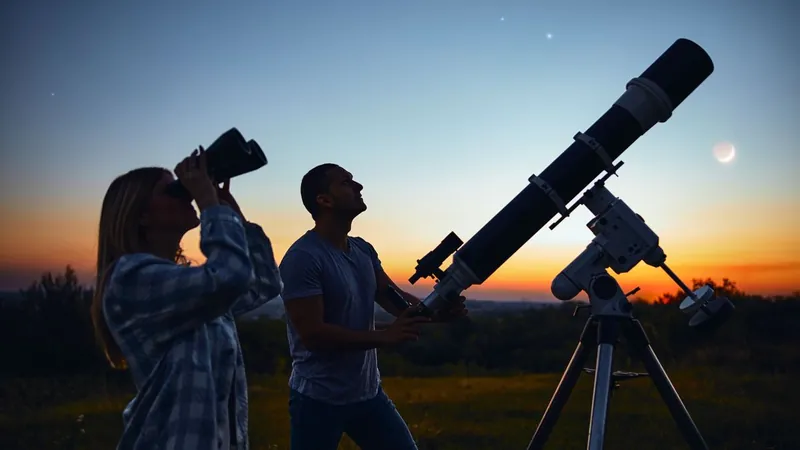
New Comet SWAN25F Sparks Excitement Among Astronomers and Stargazers Alike!
2025-04-07
Author: Kai
Introduction
The astronomical community is buzzing with excitement over the newly discovered Comet SWAN25F, captivating both amateur astronomers and casual stargazers as it makes its early morning debut in the sky. Discovered through data collected by the SWAN instrument aboard the SOHO spacecraft, this comet is already bright enough to be observed and photographed using everyday backyard telescopes.
Potential Brightness
Astronomers speculate that Comet SWAN25F could potentially brighten to a magnitude surpassing 5 by the end of April, making it a candidate for naked-eye visibility in areas with minimal light pollution—consider yourself warned: this might just be your best chance to catch a celestial wonder!
Discovery
The comet was first identified by Australian amateur astronomer Michael Mattiazzo in late March when he utilized SWAN imagery to pinpoint its location. Fast forward to April 3, and Mike Olason from Tucson, Arizona, documented breathtaking images of the comet at a magnitude of 10.6. Only three days later, it brightened to magnitude 8.4, revealing a delicate and elongated tail that has left viewers in awe.
Community Enthusiasm
In Austria, fellow skywatchers Michael Jaeger and Gerald Rhemann were thrilled to capture stunning photographs showcasing SWAN25F's tail, extending an impressive 2 degrees across the heavens. The surge in interest has drawn the attention of experts like Nick James from the British Astronomical Association, who commented, “It’s still early to predict the comet’s peak brightness, but it’s definitely brightening quickly. A few more days of observations will give us more clarity.”
Amateur astronomer Pepe Chambó also shared his findings, highlighting the comet's intricate tail—remarking on the distinct jets and breaks visible within it. “It has brightened to magnitude 8.3, visible with binoculars,” he noted, adding to the sense of community excitement as enthusiasts continue to observe its progression.
Viewing Opportunities
Currently, the best views of Comet SWAN25F can be had in the low morning sky, with conditions expected to improve over the coming weeks. Aspiring astronomers can track its location using resources such as the Minor Planet Center's Possible Comet Confirmation Page to custom-generate an ephemeris suitable for their location.
Conclusion
It’s worth mentioning, however, that visibility without optical assistance is still out of reach; the comet will need to reach a brightness of around magnitude 6 to be seen by the naked eye under optimal dark-sky conditions. So, gear up and prepare to witness this spectacular comet—nature’s reminder that the universe is full of wonders waiting to be explored!



 Brasil (PT)
Brasil (PT)
 Canada (EN)
Canada (EN)
 Chile (ES)
Chile (ES)
 Česko (CS)
Česko (CS)
 대한민국 (KO)
대한민국 (KO)
 España (ES)
España (ES)
 France (FR)
France (FR)
 Hong Kong (EN)
Hong Kong (EN)
 Italia (IT)
Italia (IT)
 日本 (JA)
日本 (JA)
 Magyarország (HU)
Magyarország (HU)
 Norge (NO)
Norge (NO)
 Polska (PL)
Polska (PL)
 Schweiz (DE)
Schweiz (DE)
 Singapore (EN)
Singapore (EN)
 Sverige (SV)
Sverige (SV)
 Suomi (FI)
Suomi (FI)
 Türkiye (TR)
Türkiye (TR)
 الإمارات العربية المتحدة (AR)
الإمارات العربية المتحدة (AR)